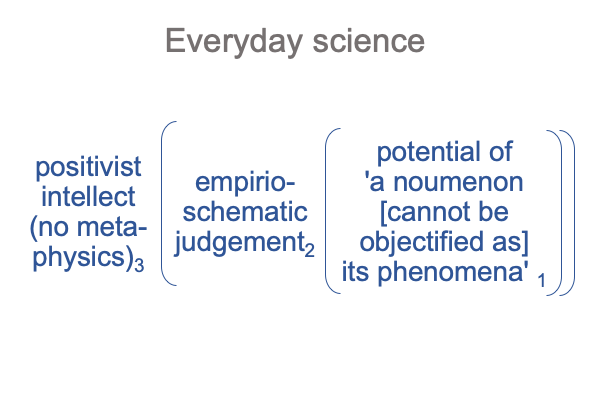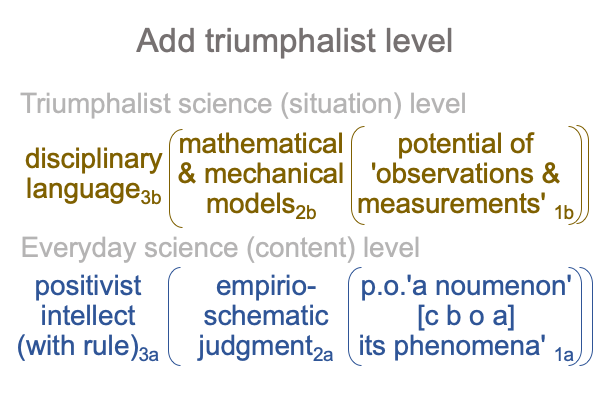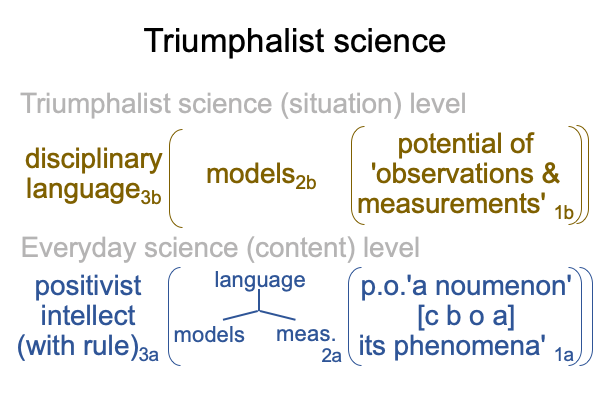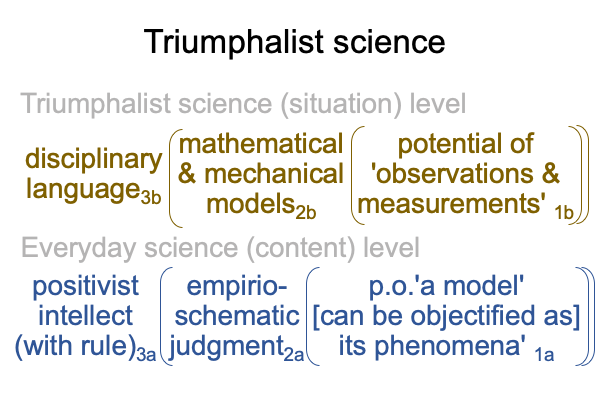0174 Here is a rendition of the resulting nested form.

0175 This category-based nested form describes everyday science.
Researchers are perfectly happy with this arrangement.
Unfortunately, early on in the Age of Ideas, science becomes triumphant. So, even though Kant’s slogan cleverly isolates the metaphysical unity of the thing itself1 from its diverse observable and measurable facets1, triumphalist advocates for science virtually situate the Positivist’s judgmenta with the empirio-schematic judgmentb. Consequently, the scientific processb virtually situates the um… intellect3a that contextualizes the scientific process2a.
0176 Here the resulting two-level interscope.

0177 This sensible construction sounds like a tautology. It is a tautology. Models2b situate models2a.
At the same time, the mathematical and mechanical models2b on the situation level are not quite the same as the mathematical and mechanical models that stand in the slot for what ought to be in the empirio-schematic judgment2a. The models2b on the situation level are successes. They2b are so successful that they may contend for the slot for the noumenon1a. The models in the empirio-schematic judgment2a are more tentative. They2a are fashioned to account for observations and measurements2a of phenomena1a.
0178 What does that imply?
Let me focus on what1b situates the content-level potential1a.

On the content level, observations and measurements in the empirio-schematic judgment2a directly emerge from (and situate) phenomena1a. Phenomena1a are the observable and measurable facets of their noumenon1a.
On the situation level, observations and measurements on the situation level1b virtually situate phenomena1a that… how to say it?… objectify their noumenon1a. In other words, a successful model2b should tell the inquirer what the noumenon1amust be.
0179 College-level science laboratories typify triumphalist science.

